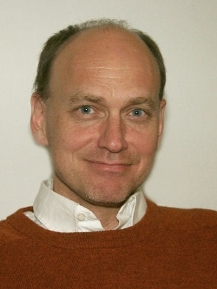| Event Start Date: 22. February 2018 | Event End Date: 22. February 2018 | Event Venue: |
Lecture by: 
Prof. Dr. Cyriel M.A. PENNARTZ,
Head of Cognitive and Systems Neuroscience group,
University of Amsterdam
Consciousness and the integration of modalities: theory and experiment
Thursday, 22 February, 14.00-15.30
In: Auditorium 1, G. Sverdrups Hus/ Universitetsbiblioteket, Blindern, Moltke Moes vei 39 ved/ Blindernveien, Oslo 0317
Programme:
14.00 – 14.05: Welcome and introduction by Johan F. Storm, Neurophysiology, Univ. of Oslo
14.10 – 15.00: Lecture by Cyriel Pennartz: Consciousness and the integration of modalities
15.00 – 15.30: Discussion and questions from the audience
Abstract: The last three decades have witnessed several ideas and theories on brain-consciousness relationships, but it is still poorly understood how brain systems may fulfill the various requirements and characteristics we associate with conscious experience. This seminar will pay attention in particular to the basic requirements for generating experiences set in different modalities given the rather uniform nature of signal transmission from periphery to brain. We will next examine a few experimental approaches relevant for understanding basic processes underlying consciousness, such as changes in population behavior during sensory detection and changes in system-wide spike correlations as studied with multi-area ensemble recordings. For visual detection, the primary sensory cortices have been a long-standing object of study, but it is unknown how neuronal populations in this area process detected and undetected stimuli differently. We will examine whether visual detection correlates more strongly with the overall response strength of a population, or with population response heterogeneity. Zooming out from visual cortex to larger interconnected neural systems, we will study how long- and short-range, spike-based functional connectivity between brain areas varies across the sleep-wake cycle. Next we will revisit the issue of multimodal integration by asking how “visual” the visual cortex is when tested in a multisensory setting. Finally, we will return to long-standing theoretical issues: (i) the Explanatory Gap, i.e. that gap that is facing us when comparing, and seeking to connect, qualitatively rich conscious experience with raw physiological activity of neural substrates, and (ii) requirements to design empirically testable theories of consciousness-brain relationships. It will be argued that a productive way forward comes from thinking about world representations as set across different levels of computation and complexity, ranging from cells to ensembles, multi-area networks and yet larger representational aggregates.
References:
Montijn JS, Goltstein PM, Pennartz CMA (2015) “Mouse V1 population correlates of visual detection rely on heterogeneity within neuronal response patterns”. eLife 2015; 4:e10163. DOI: 10.7554/eLife.10163.
Pennartz CMA (2015) “The brain’s representational power – on consciousness and the integration of modalities”. MIT press (382 pp.). ISBN: 9780262029315.